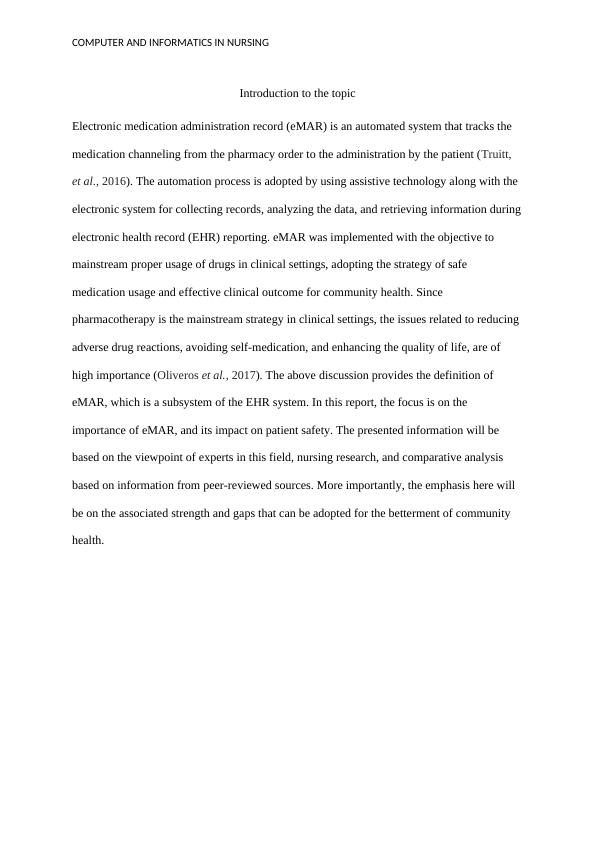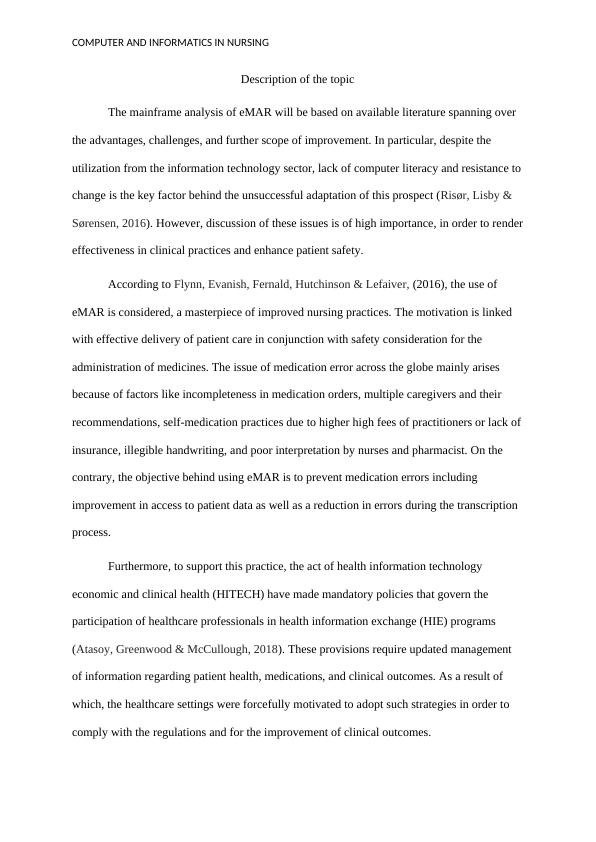Electronic Medication Administration Record: Importance and Impact on Patient Safety
Rubric for grading a paper in CVNU 322 course.
12 Pages3275 Words427 Views
Added on 2023-04-25
About This Document
This report discusses the importance and impact of Electronic Medication Administration Record (eMAR) on patient safety. It covers the advantages, challenges, and scope of improvement of eMAR in clinical settings. The report also identifies the existing knowledge gaps and challenges for proper implementation of eMAR among the clinical settings.
Electronic Medication Administration Record: Importance and Impact on Patient Safety
Rubric for grading a paper in CVNU 322 course.
Added on 2023-04-25
ShareRelated Documents
End of preview
Want to access all the pages? Upload your documents or become a member.
The Role of Nursing Informatics in Ensuring Patient Safety: A Discussion
|3
|467
|377
e-Health: an emerging arena in the connection of public health, clinical informatics, and business
|12
|3269
|224
Health Information Systems: A Review of EHR, EMR, and PHR
|15
|1412
|334
Medical Informatics Assignment PDF
|14
|4155
|62
Electronic health records in nursing practice Power Point Presentation 2022
|13
|860
|44
Nursing Informatics Assignment Report
|5
|898
|13




